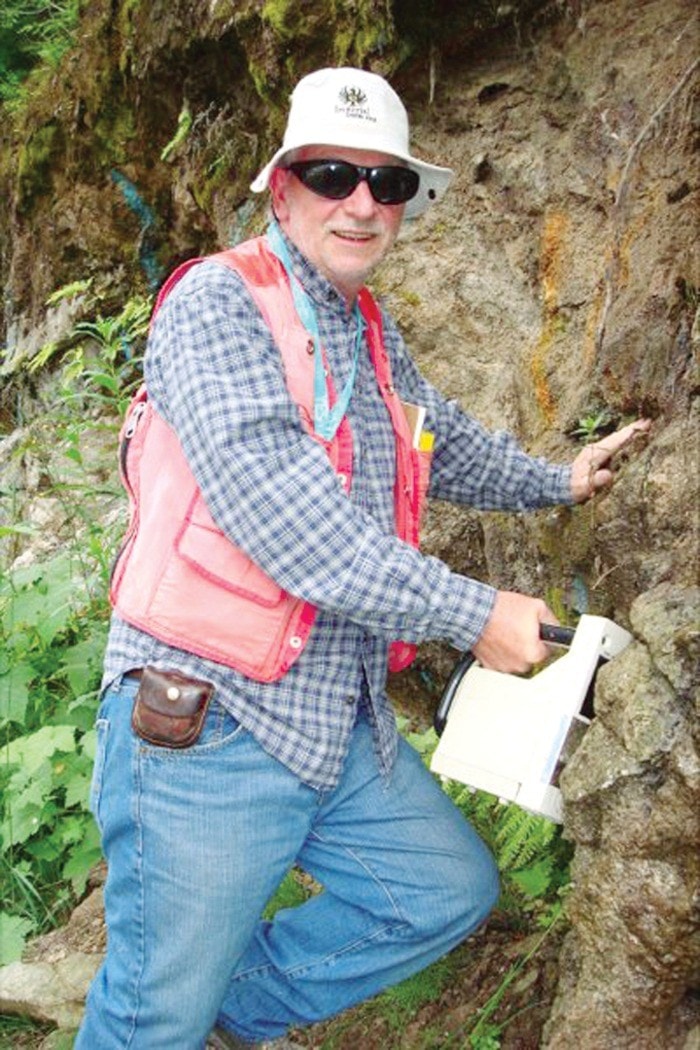The search for tungsten at the head of Loughborough Inlet began due to the diligence of a part-time prospector, the keen eye of a veteran geologist and a single rock sample.
Whether or not the tungsten find at kilometre 11 on a logging road in the Stafford River Valley ever becomes a mine remains questionable, but the deposit is looking good.
“It’s promising…we’re pleased with what we’ve done and we’re going to keep chugging along,” says engineer Robert Culbert, a consultant with Dentonia Resources Ltd. of Vancouver.
The company is still in the exploration stage and core samples will be studied to determine the true potential of the deposit, but the find is exciting due to the growing demand and rising prices for tungsten.
“About 85 per cent of the world’s production is in China and they keep it all,” notes Culbert.
In Western Canada, tungsten concentrate is produced at the Cantung mine in the Northwest Territories. The mine had closed in October 2009 due to low prices for tungsten trioxide, US$187 per metric tonne, but reopened a year later when prices rose significantly. The price now is roughly US$463 a tonne.
With Cantung profitable, Culbert can imagine the potential for the Stafford Tungsten Property, as it’s known. It’s far closer to shipping lanes, supplies and manpower than the mine in the Northwest Territories.
“This is a really good location,” says Culbert.
Tungsten is also used for a lot more than making incandescent lightbulbs. Its ability to withstand high temperatures, resist corrosion and to create supper alloys is driving up demand as its also used in electronics, chemical applications, armaments, tools, halogen lamps, shotgun pellets and much more.
“It’s known as a ‘strategic metal’,” says Culbert.
While tungsten’s value continues to grow, no one ever knew there were deposits in the Stafford River Valley until two men started poking around the mountainous region in the mid-2000s.
Ron Olynyk, a logger and part-time prospector, and his partner, Dan Cardinal, a professional geologist, began prospecting the area on and off for about five years.
Around 2009, Olynyk brought rock samples to Dentonia and thought they contained nickel and some copper. He was wrong as the tests came back negative.
Despite the disappointing result, Culbert and Jim Turner, a veteran geologist working for Dentonia, decided to investigate further and visited the site. More samples were taken and again the results were disappointing.
But then Olynyk produced another rock sample that caught Turner’s immediate attention.
“Jim Turner is an extraordinary geologist so he asks (Olynyk), ‘where did you get this? We need to have a better look at it’,” Culbert recalls.
Closer inspection revealed tungsten which prompted further exploration. They returned to take more samples, to conduct an aerial survey, and then they brought in a very small drill to take core samples.
Those cores will soon be assayed to determine whether there’s enough tungsten in the skarn for Dentonia to continue moving forward.
“We’re now splitting the core,” says Culbert, during a phone interview from his office in Vancouver. “So far, it’s encouraging, but the truth comes out in the assays – then you know.”
